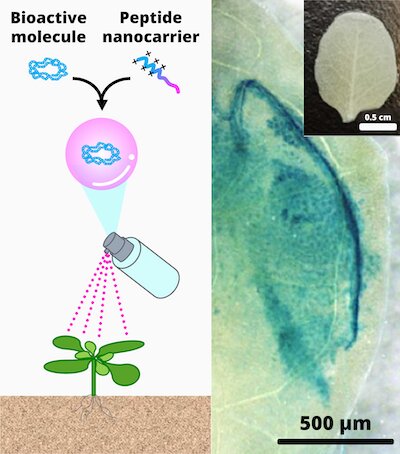Nanocarrier spray: Better crops without genetic modification
Date: 28.2.2022
Researchers at the RIKEN Center for Sustainable Resource Science (CSRS) in Japan have developed a way to improve crop quality without needing to create special genetically modified plants.
 Rather that changing plant genomes, the new technique relies on a spray that introduces bioactive molecules into plant cells through their leaves. The new technology could be used to help crops resist pests or become more resistant to drought – in less time and at less cost than making lines of genetically modified crops.
Rather that changing plant genomes, the new technique relies on a spray that introduces bioactive molecules into plant cells through their leaves. The new technology could be used to help crops resist pests or become more resistant to drought – in less time and at less cost than making lines of genetically modified crops.
Technology can now directly alter genomes and create genetically modified organisms (GMOs), including GM food. However, making transgenic plants takes time, money, and still has not gained widespread public support.
RIKEN CSRS researchers led by Masaki Odahara have developed an alternative to GM food that can overcome these problems. For example, rather than changing a plant's genome so that it doesn't express a particular gene, the same gene can be suppressed on the go by inserting a specific bioactive compound into the plant. In this scenario, the bioactive compound is taken into the plant's cells by a carrier that can penetrate the cell walls of plant cells.
Many types of nanoparticles can penetrate plant cells. The researchers focused on cell-penetrating peptides (CPPs) because they can also target specific structures inside plants cells, such as chloroplasts.
"This result was critical," says Odahara, "because it is important that any alternative to genetic modification be able to achieve the same functional outcome."























